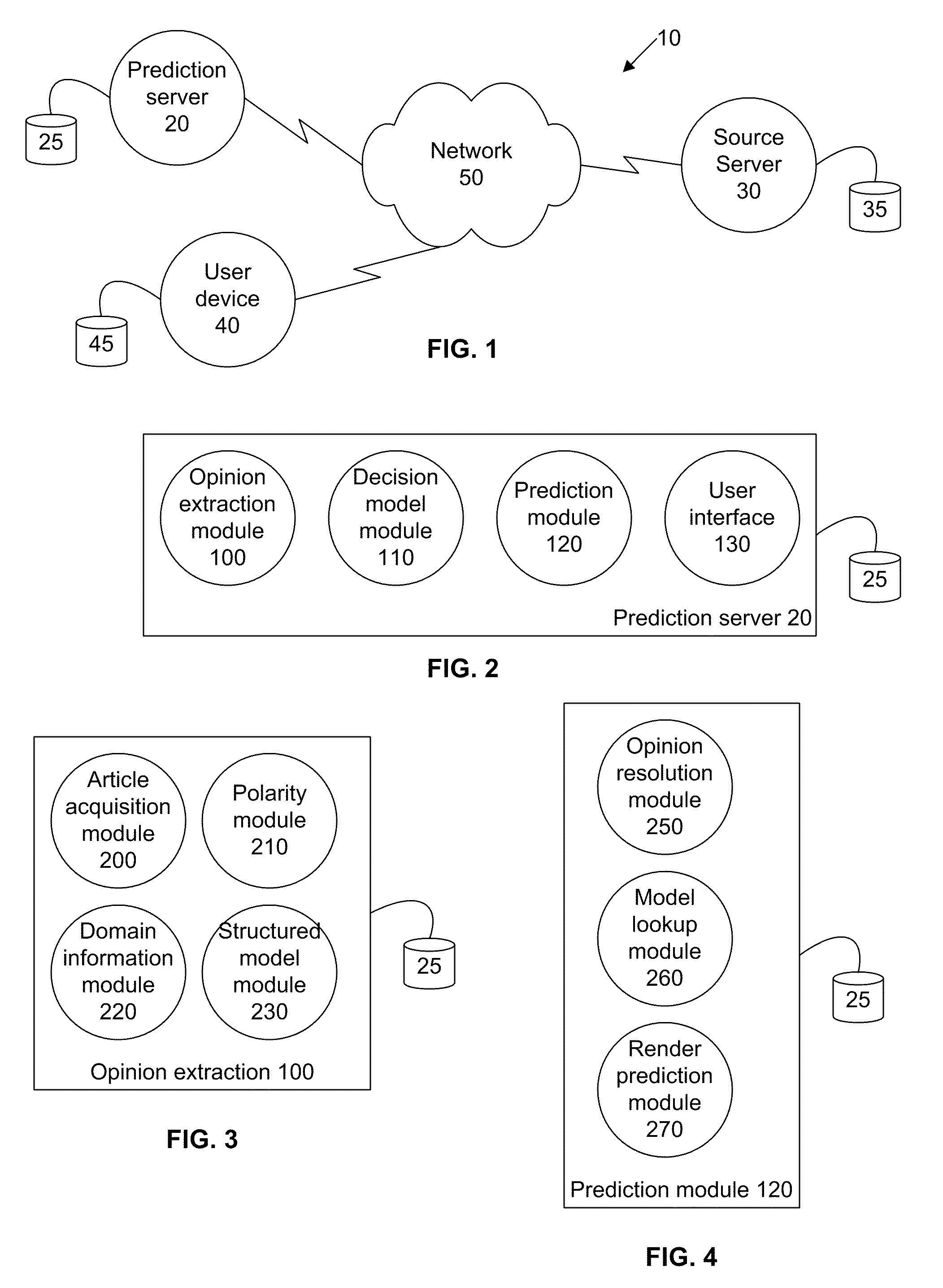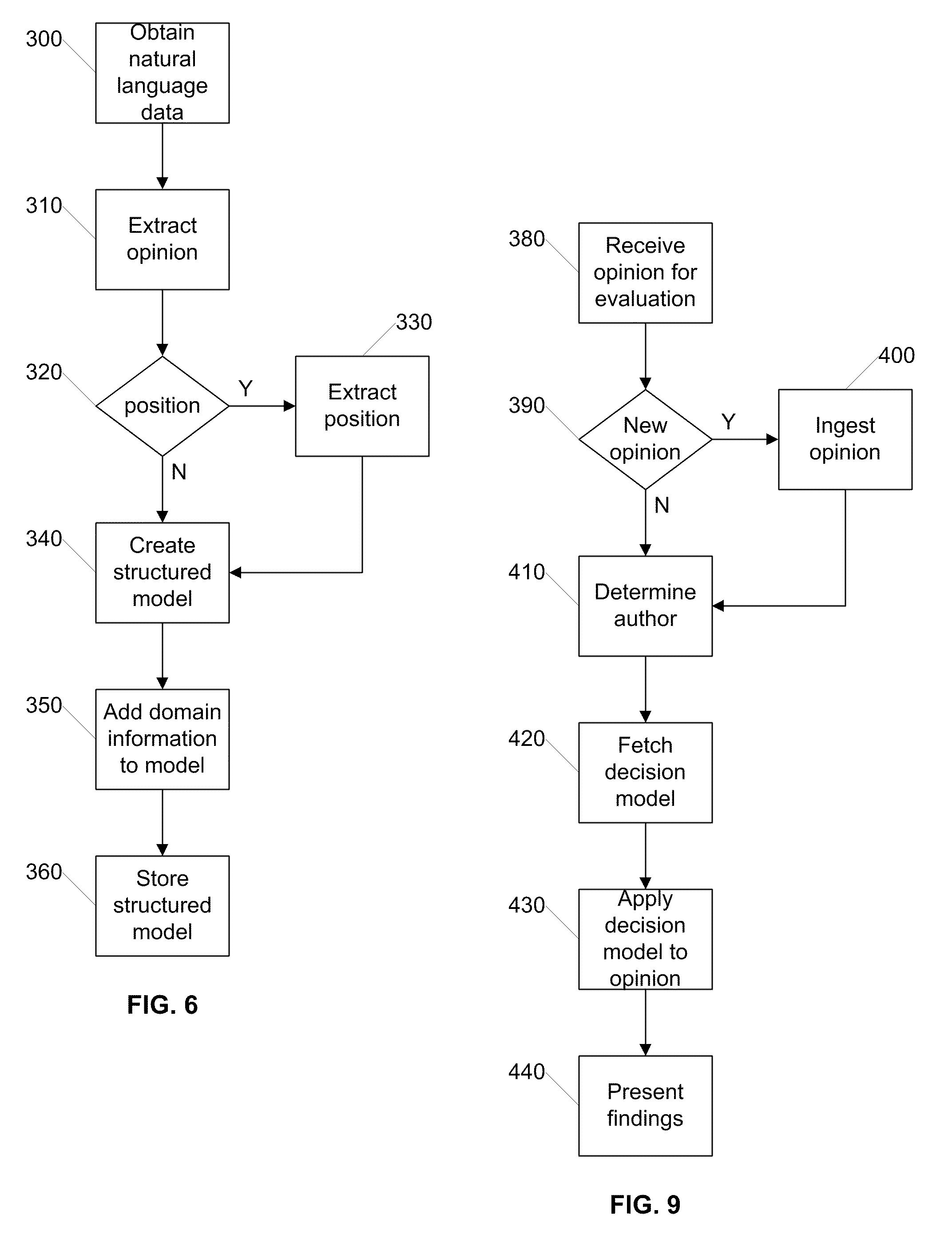System and Method for Automatically Predicting the Outcome of Expert Forecasts
a technology of automatic prediction and forecasting, applied in the field of expert forecasting, can solve the problems of many problems within conventional expert opinion analysis, inability to determine whether the positive or negative polarity supported or opposed the ultimate opinion of the expert, and often expressed analysis
- Summary
- Abstract
- Description
- Claims
- Application Information
AI Technical Summary
Benefits of technology
Problems solved by technology
Method used
Image
Examples
Embodiment Construction
[0047]Certain embodiments as disclosed herein provide systems and methods for predicting the accuracy of expert forecasts based on a corpus of prior expert forecasts and presenting recommended actions based on the predicted accuracy. In this description, the terms “forecasts” and “opinions” are used interchangeably. For example, one method as disclosed herein allows for a natural language article expressing a current opinion by an expert about a target subject to be analyzed in the context of a plurality of prior opinions from the same expert about the same or a similar target subject to determine the likelihood of accuracy of the current opinion expressed by the expert. Recommended actions to be taken in accordance with or against the current opinion expressed by the expert are then presented.
[0048]After reading this description it will become apparent to one skilled in the art how to implement the invention in various alternative embodiments and apply the invention to various alte...
PUM
 Login to View More
Login to View More Abstract
Description
Claims
Application Information
 Login to View More
Login to View More - R&D
- Intellectual Property
- Life Sciences
- Materials
- Tech Scout
- Unparalleled Data Quality
- Higher Quality Content
- 60% Fewer Hallucinations
Browse by: Latest US Patents, China's latest patents, Technical Efficacy Thesaurus, Application Domain, Technology Topic, Popular Technical Reports.
© 2025 PatSnap. All rights reserved.Legal|Privacy policy|Modern Slavery Act Transparency Statement|Sitemap|About US| Contact US: help@patsnap.com



